RBI Sprint - Market Tremors
Posted On Thursday, May 12, 2022
Bond yields are surging-what should investors do?
In the last month’s edition of the Debt Market Observer – Inevitable Pivot, we cautioned that “The path forward for bonds is filled with uncertainties....there will be surprises, there will be miscommunications and there will be market overreactions.”
We witnessed some of that in the last two weeks.
The RBI surprised the market with an off-schedule 40 basis points hike in the policy Repo rate (Rate at which banks borrow from the RBI.). The Repo rate now stands at 4.40%. It also raised the Cash Reserve Ratio (CRR - portion of deposits banks have to keep with the RBI as reserves) by 50 basis points from 4.00% to 4.50%.
Expectations Reset
After the April monetary policy, rate hikes looked imminent. The bond market prepared itself and priced for higher rates. The interest rate swap curve was pricing for more than 200 basis points of cumulative rate hike, before the RBI’s announcement.
Yet, after the announcement bond yields shoot up and prices dropped. The 10-year government bond yield rose 26 basis points in intraday trade after the policy announcement. 3-5 year bonds sold off even more with over 33 basis points intraday jump in yields.
So, why this market reaction?
There are nuances in this policy announcement that changed the market reading of the RBI.
The RBI chose to -
✔ hike rate out of schedule; that too just few hours before the US federal reserve’s policy
✔ hike by 40 basis points not the conventional 25 basis points
✔ raised CRR to absorb excess liquidity
These should be seen together with the April monetary policy move. In April the RBI introduced Standing Deposit Facility (SDF) as a tool to absorb excess liquidity from the banking system. The SDF rate is set at 25 basis points below the Repo rate.
This itself was equivalent to a 40 basis points hike in the marginal overnight rate as the floor monetary policy rate moved up from the reverse repo rate of 3.35% to the SDF rate of 3.75%. Now, with a 40 basis points hike in the repo rate, the SDF rate is set at 4.15%. This implies a cumulative 80 basis points rate hike in 4 weeks.
Chart – I: Money Markets moved up rates shoot up on surprise RBI hike and liquidity tightening
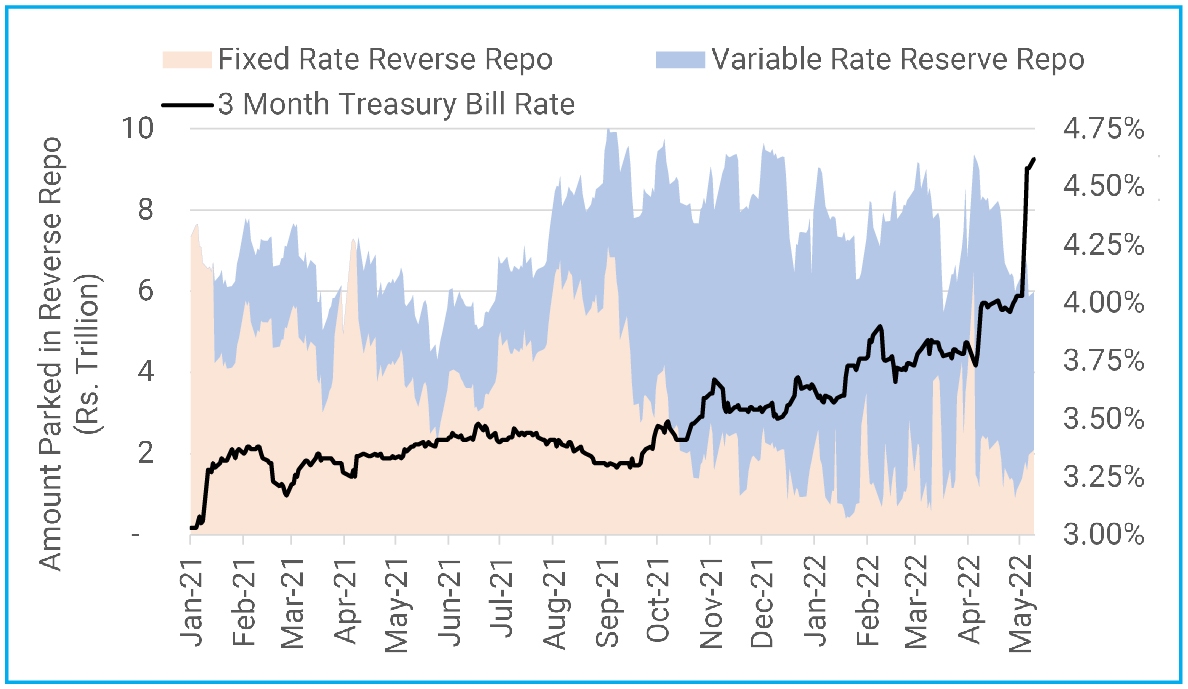
Source – Reserve Bank of India, Bloomberg, Quantum Research; Data up to May 9, 2022
Past Performance may or may not sustained in future.
This shows a sense of urgency within the RBI to unwind the ultra-easy monetary policy of low rates and high surplus liquidity, quickly. There was also a realization that the RBI will not be hesitant to use ‘surprise’ as a policy tool.
Given the inflation uncertainty and the fact that RBI is behind its peers in unwinding the pandemic stimulus, the urgency to act is justified.
In his media statement, RBI Governor Shaktikanta Das said – “There is the collateral risk that if inflation remains elevated at these levels for too long, it can de-anchor inflation expectations which, in turn, can become self-fulfilling and detrimental to growth and financial stability.”
Clearly, the RBI has joined other global central banks in the war against inflation. We expect that the RBI would frontload the rate hikes with another 75-100 basis points hike by the year-end.
Not Too Far
The next question is - how far will the RBI go?
The rate hiking cycle has just begun. It’s too early to frame any clear view about the total quantum of rate hikes or the terminal policy rate.
However, there are evidence suggesting that the rate tightening cycle may not be too long this time (refer Investing In The New Normal).
Much of the inflation we see is result of supply chain bottlenecks. Russia Ukraine conflict has pushed prices of many commodities across the food and fuel basket spiraling up to multi-year high. Global trade is also disrupted due to the pandemic which is causing artificial shortages of many key inputs.
These supply-side pressures have pushed the CPI inflation to 7% in March 2021. Although this is above the RBI’s 6% upper threshold, it is not too far when compared to the inflation situation in many advanced economies.
Chart – II: Elevated Inflation to force RBI into hiking interest rates
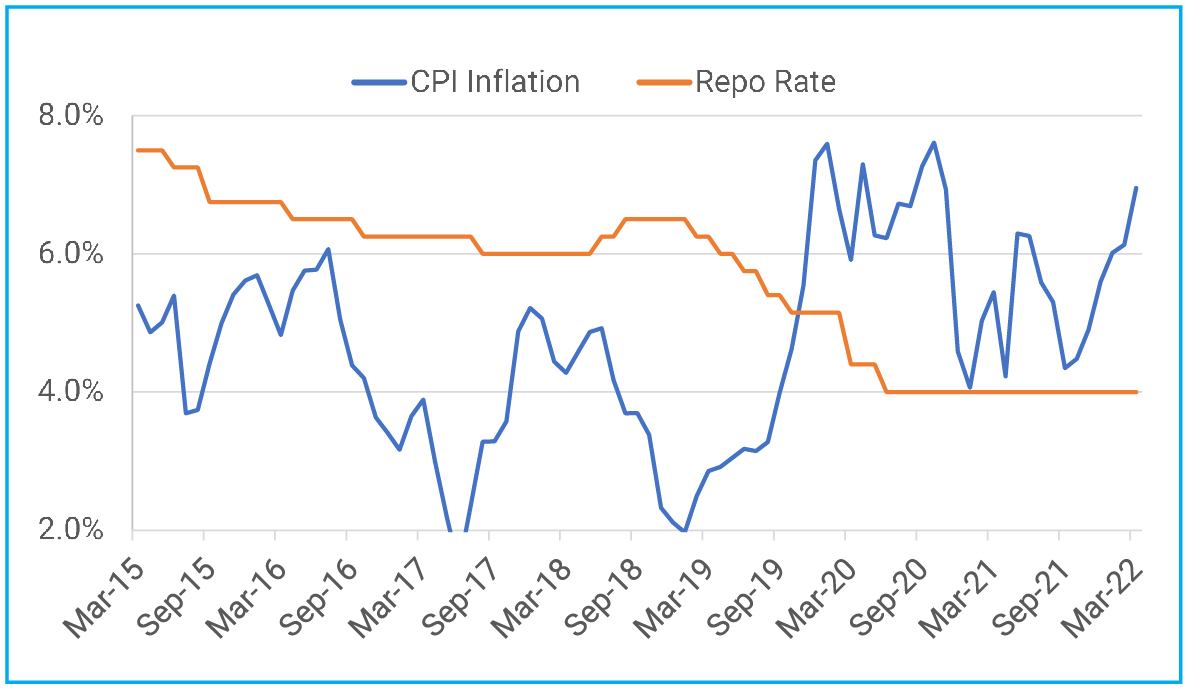
Source – Mospi, Quantum Research; Data as of March 2022.
Past Performance may or may not sustained in future.
Monetary policy has a limited role in tackling this supply-side ‘cost push’ inflation. As the supply chain bottlenecks ease, inflation would soften quickly.
Demand-side of inflation is still relatively weak. To recall, the Indian economy was not in good shape before it got hit by the Covid-19 pandemic. GDP growth had slowed down to multi-year low amid weak demand, high unemployment, and a credit freeze.
Unlike many advanced economies, our post-pandemic direct fiscal support was significantly lower. Although economy rebounded quickly, the underlying demand condition is still weak due to income and job losses.
Chart - III: Weak Employment and Income Loss Continue to Cloud Demand Outlook
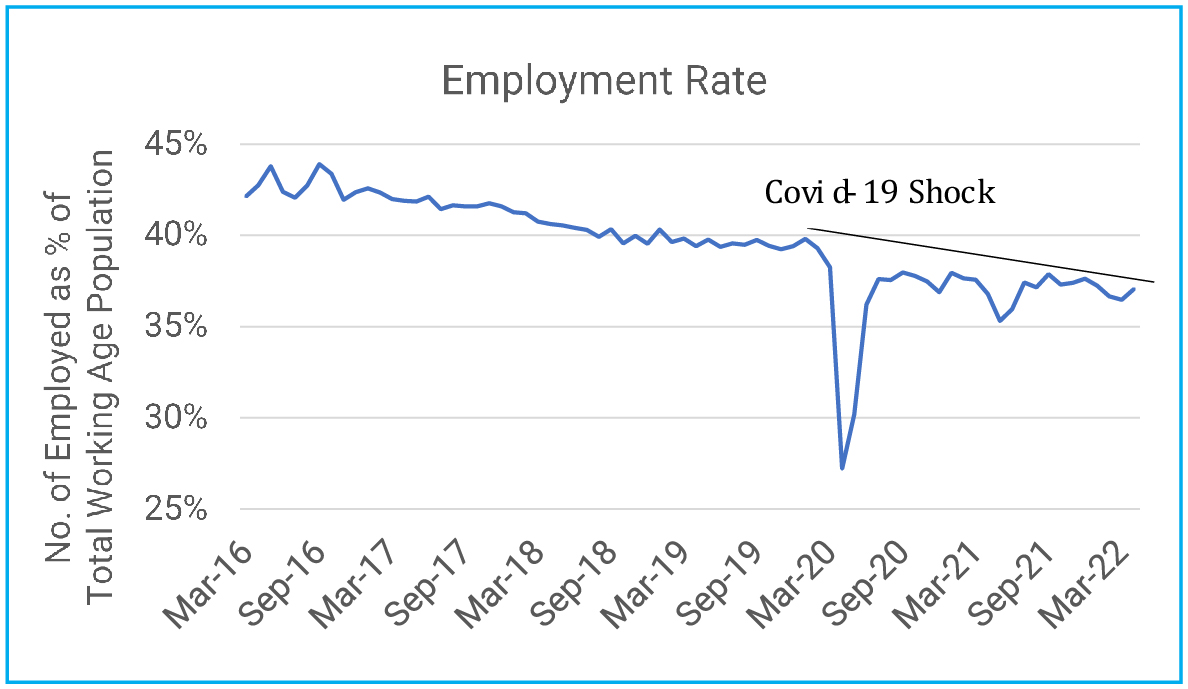
Source – Mospi, Quantum Research; Data as of March 2022
Past Performance may or may not sustained in future.
Year on year GDP growth looks high due to lower base effect; while in absolute terms, GDP is far from its pre-pandemic trend. The weakness can also be seen in the employment data and demand for various goods and services.
Chart - IV: Real GDP is Still Below Pre-Pandemic Trend
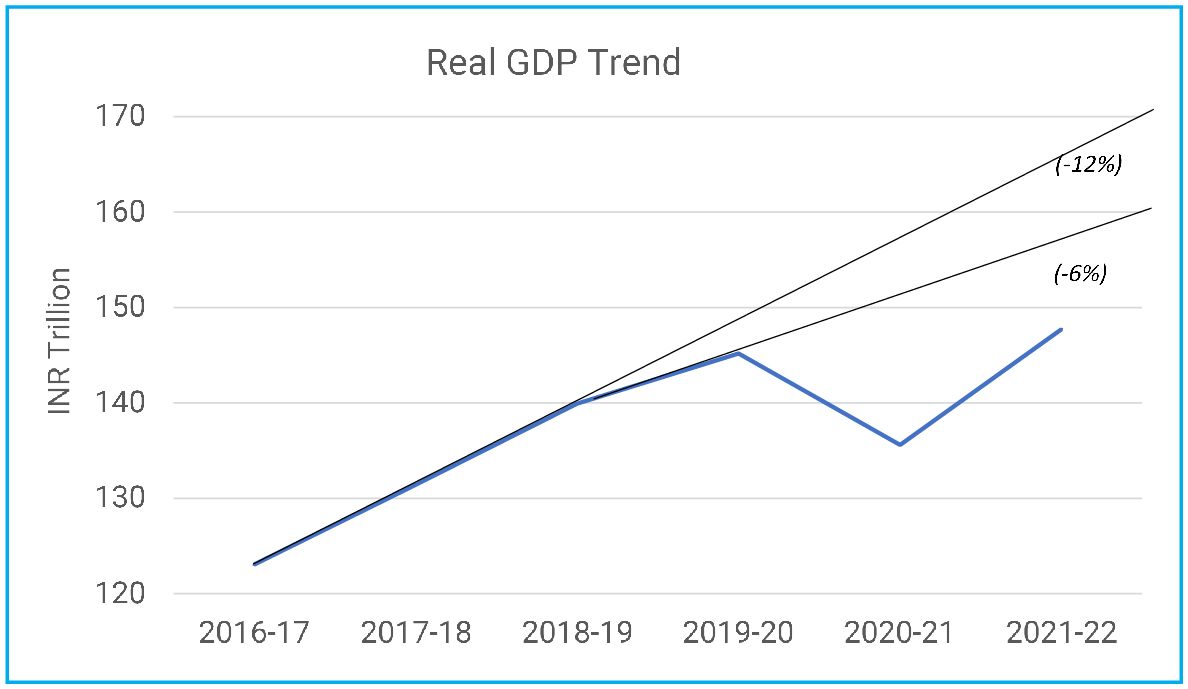
Source – Mospi, Quantum Research; Data as of March 2022
Past Performance may or may not sustained in future.
Given the weak consumer demand and fading growth momentum, RBI may not be able to hike too much. We expect the terminal repo rate (peak rate) in this hike cycle to be below 6%.
Liquidity Conundrum
On the policy rates, RBI’s actions are somewhat in line with their commentary in the April monetary policy. While the hike in cash reserve ratio (CRR) is little confusing given the RBI’s earlier guidance of gradual withdrawal of liquidity over a multi-year time frame.
CRR hike of 50 basis points will take away around Rs. 870 billion of excess liquidity in one shot. Apparently, RBI is not comfortable with the current level of excess liquidity persisting for very long.
In his statement governor said – “Liquidity conditions need to be modulated in line with the policy action and stance to ensure their full and efficient transmission to the rest of the economy.”
This implies that the RBI will continue to reduce the surplus liquidity along with the rate hikes to ensure transmission of higher rates into the economy. However, overall liquidity may remain in surplus to support the credit offtake and economic growth momentum.
The Governor said – “the RBI will ensure adequate liquidity in the system to meet the productive requirements of the economy in support of credit offtake and growth.”
As on May 9, 2022, the surplus liquidity parked under the RBI’s variable rate reverse repo (VRRR) and SDF windows is around Rs. 6 trillion (3.5% of NDTL). [refer Chart – I]
As the RBI Report on Currency and Finance for the year 2021-22, when surplus liquidity persists at above 1.5% of NDTL, for every percentage point increase in surplus liquidity, the average inflation could rise by about 60 basis points in a year.
So, in an inflationary environment, the RBI would bring down the liquidity surplus to below 1.5% of NDTL. Based on the current Net Demand and Time Liabilities of the banking system the upper threshold on surplus liquidity would be around Rs. 2.5 trillion.
Thus, we should expect further liquidity absorption to the tune of Rs. 3.5 trillion over the coming months. We would not be surprised if the RBI hikes the CRR by another 50 basis points in the June meeting. We should also consider a possibility of bond and/or foreign exchange sales to drain out liquidity.
Market Outlook - Uncertainty vs Valuation
The bond market is having a turbulent year 2022 so far. It faced back-to-back shocks from hawkish central banks’ commentaries around the world, the geo-political conflict between Russia and Ukraine, spike in crude oil prices, global food shortages and price spike, and further breakdown of global supply chains.
In India, Monetary Policy made a complete U-turn from ultra-dovish in February to a surprise rate hike in May.
All this combined pushed up bond yields to their 3-year highs. Since the start of the year 2022, the 10-year government bond yield has risen by ~100 basis points while the 5-year yields has increased by ~140 basis points.
Since Last month alone, 10-year yield is up by 63 basis points and 5-year yield is up by 117 basis points.
Chart - V: Bond Market Front Running RBI’s Rate Hikes
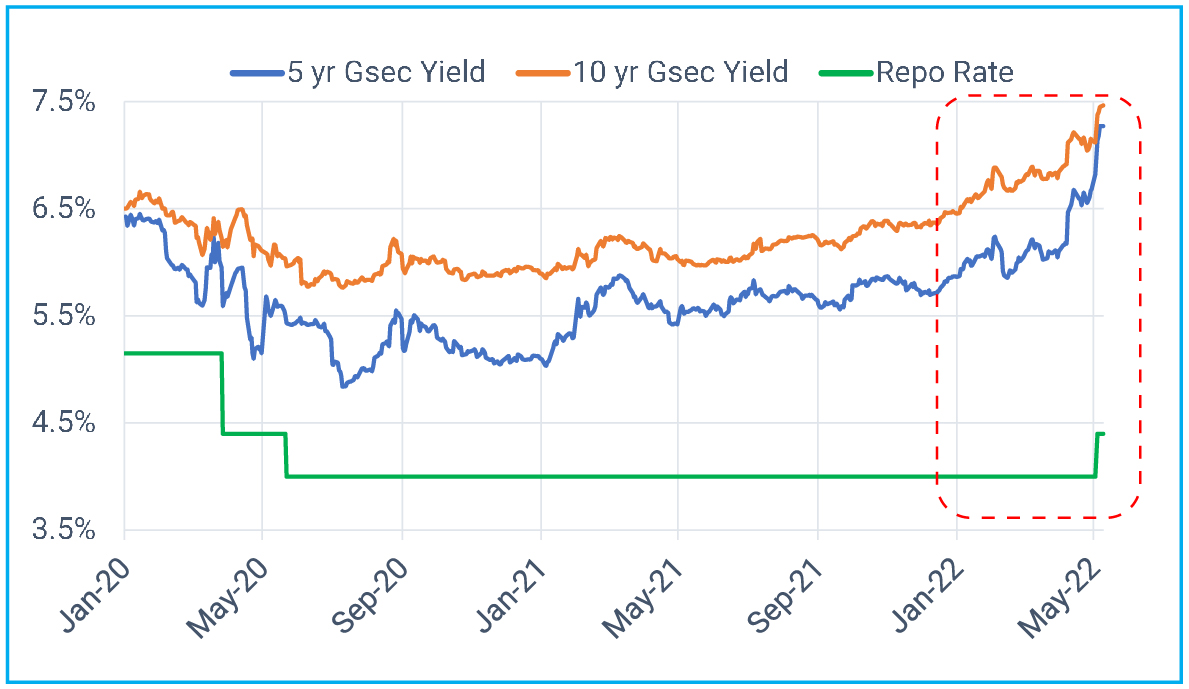
Source – Refinitiv, Quantum Research; Data as of May 9, 2022
Past Performance may or may not sustained in future.
Currently, the 10-year government bond is trading at a yield of 7.47% while the 5-year bond is trading at 7.27%. Most of the medium to long-duration bonds are trading at a yield higher than their pre-pandemic levels when the repo rate was at 5.15%.
Chart - VI: Yield Curve Shifted Up; Steepness Persist
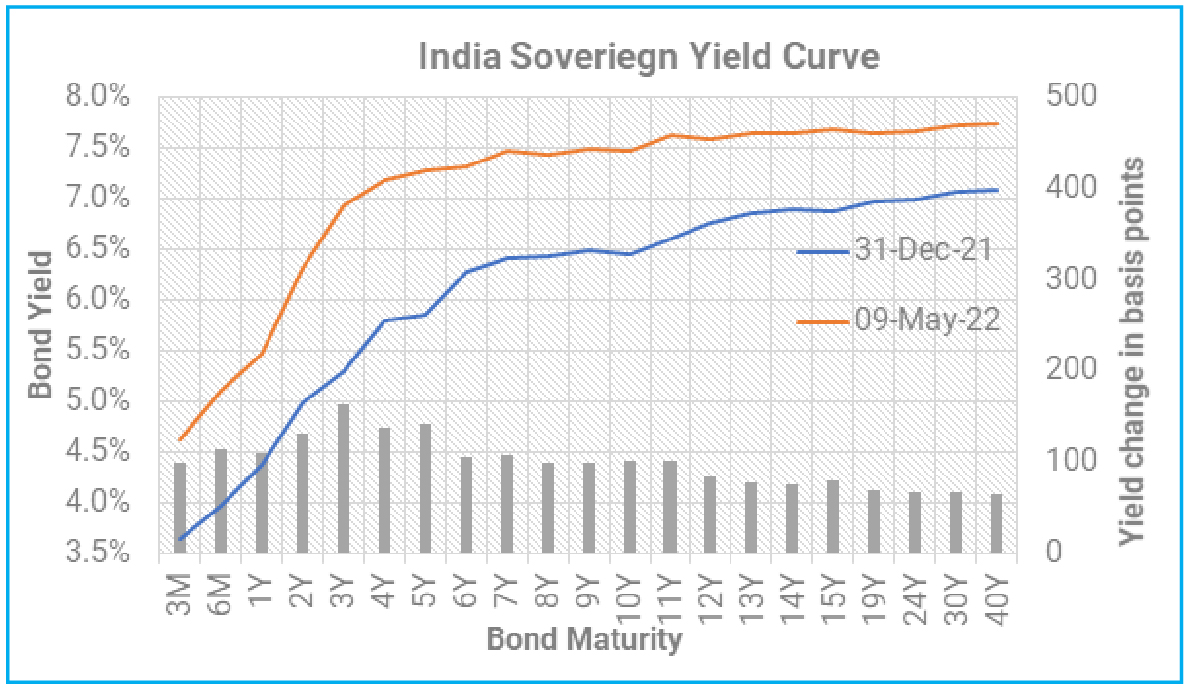
Source – Refinitiv, Quantum Research; Data as of May 9, 2022
Past Performance may or may not sustained in future.
With the recent sell-off valuations have become even more attractive. The 10-year bond yield level of ~7.4% was last seen in early 2019 when the repo rate was at 6.5%.
The spread of the 10-year over 1-year government bond yield is currently at 200 basis points. This is more than double its 20-year average of 84 basis points. At current yield levels, much of the rate hike is already priced in the medium to long-duration bonds.
Chart - VII: Term Spreads are widest in more than a decade
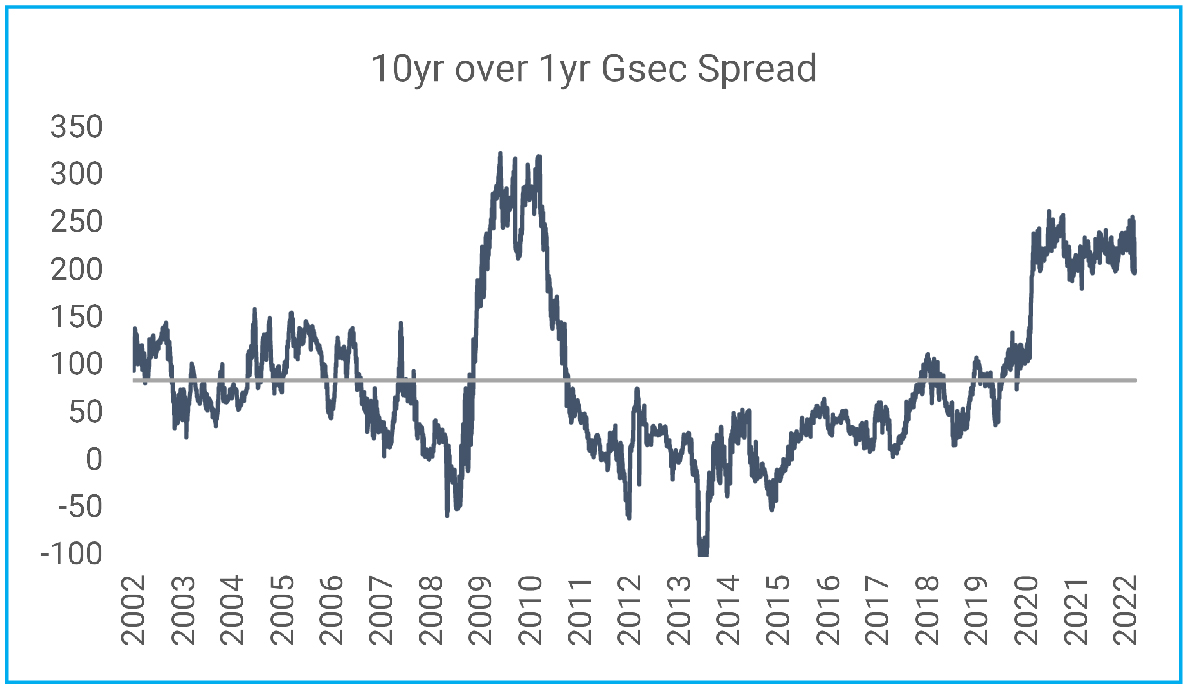
Source – Refinitiv, Quantum Research; Data as of May 9, 2022
Past Performance may or may not sustained in future.
So, it would be reasonable to assume that the medium to long-term bonds would not be too sensitive to the rate hikes by the RBI, which are only normalization of the crisis time monetary policy.
Instead, what we worry about are –
- the severe demand-supply gap in the domestic government bond market, given the sharp jump in government bond supply to Rs. 15 trillion in FY23,
- geopolitical uncertainty and its impact on global supply chains and commodity prices especially crude oil, and
- the pace and extent of rate hikes and balance sheet reduction by the US Federal Reserve.
We reiterate that the path forward for bonds is filled with uncertainties. Things are still evolving on the geopolitical front and the unwinding of ultra-easy monetary policy has just started. So, there will be surprises, there will be miscommunications and there will be market overreactions.
Given the market pricing of aggressive rate hikes, there is equal possibility of both positive and negative surprises in the next 2-3 quarters.
Portfolio Positioning
In the Quantum Dynamic Bond Fund, we have been avoiding long-term bonds for some time due to our cautious stance on the markets. The defensive positioning helped the portfolio ride through the market sell-off over the last three months.
After the steep sell-off in the last two months, valuations have become even more attractive on medium to long-term bonds. However, given the high uncertainty as mentioned above, we will continue to be cautious in adding into long-duration bonds as a core portfolio position.
We are still holding a significant cash position which we will deploy tactically depending on market opportunities. For the core portfolio, we continue to like the 4-5 years maturity bonds which in our opinion, offer the critical balance between duration and accrual yield.
We would remain open and nimble to exploit any market mispricing by making a measured tactical allocation to any part of the bond yield curve as and when the opportunity arises.
We stand vigilant to react and change the portfolio positioning in case our view on the market changes.
What should Investors do?
In an environment of high uncertainty, it would be prudent for investors to avoid excessive credit and interest rate risk.
In our opinion, a combination of liquid to money market funds and short-term debt funds, and/or dynamic bond funds with low credit risks should remain as the core fixed income allocation.
After more than a 100 bps sell-off in the bond market over the last year, the return potential of debt funds has improved significantly. However, it would not be a smooth ride as markets will continue to have bouts of volatility.
We suggest bond fund investors to have a longer holding period to ride through any intermittent turbulence in the market.
For any queries directly linked to the insights and data shared in the newsletter, please reach out to the author – Pankaj Pathak, Fund Manager – Fixed Income at [email protected].
For all other queries, please contact Neeraj Kotian – Area Manager, Quantum AMC at [email protected] / [email protected] or call him on Tel: 9833289034
Read our last few Debt Market Observer write-ups -
- Inevitable Pivot: Resetting Market Expectations
- Geopolitics, Oil and the Bond Market
| Name of the Scheme | This product is suitable for investors who are seeking* | Riskometer |
| Quantum Dynamic Bond Fund An Open-ended Dynamic Debt Scheme Investing Across Duration. A relatively high interest rate risk and relatively low credit risk. | • Regular income over short to medium term and capital appreciation • Investment in Debt / Money Market Instruments / Government Securities | 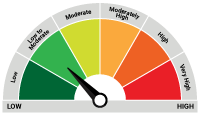 Investors understand that their principal will be at Low to Moderate Risk |
The Risk Level of the Scheme in the Risk O Meter is based on the portfolio of the scheme as on April 30, 2022.
| Potential Risk Class Matrix – Quantum Dynamic Bond Fund | |||
| Credit Risk → | Relatively Low | Moderate (Class B) | Relatively High (Class C) |
| Interest Rate Risk↓ | |||
| Relatively Low (Class I) | |||
| Moderate (Class II) | |||
| Relatively High (Class III) | A-III | ||
Disclaimer, Statutory Details & Risk Factors:
The views expressed here in this article / video are for general information and reading purpose only and do not constitute any guidelines and recommendations on any course of action to be followed by the reader. Quantum AMC / Quantum Mutual Fund is not guaranteeing / offering / communicating any indicative yield on investments made in the scheme(s). The views are not meant to serve as a professional guide / investment advice / intended to be an offer or solicitation for the purchase or sale of any financial product or instrument or mutual fund units for the reader. The article has been prepared on the basis of publicly available information, internally developed data and other sources believed to be reliable. Whilst no action has been solicited based upon the information provided herein, due care has been taken to ensure that the facts are accurate and views given are fair and reasonable as on date. Readers of this article should rely on information/data arising out of their own investigations and advised to seek independent professional advice and arrive at an informed decision before making any investments.
Mutual fund investments are subject to market risks read all scheme related documents carefully.
Please visit – www.QuantumAMC.com to read scheme specific risk factors. Investors in the Scheme(s) are not being offered a guaranteed or assured rate of return and there can be no assurance that the schemes objective will be achieved and the NAV of the scheme(s) may go up and down depending upon the factors and forces affecting securities market. Investment in mutual fund units involves investment risk such as trading volumes, settlement risk, liquidity risk, default risk including possible loss of capital. Past performance of the sponsor / AMC / Mutual Fund does not indicate the future performance of the Scheme(s). Statutory Details: Quantum Mutual Fund (the Fund) has been constituted as a Trust under the Indian Trusts Act, 1882. Sponsor: Quantum Advisors Private Limited. (liability of Sponsor limited to Rs. 1,00,000/-) Trustee: Quantum Trustee Company Private Limited. Investment Manager: Quantum Asset Management Company Private Limited. The Sponsor, Trustee and Investment Manager are incorporated under the Companies Act, 1956.



